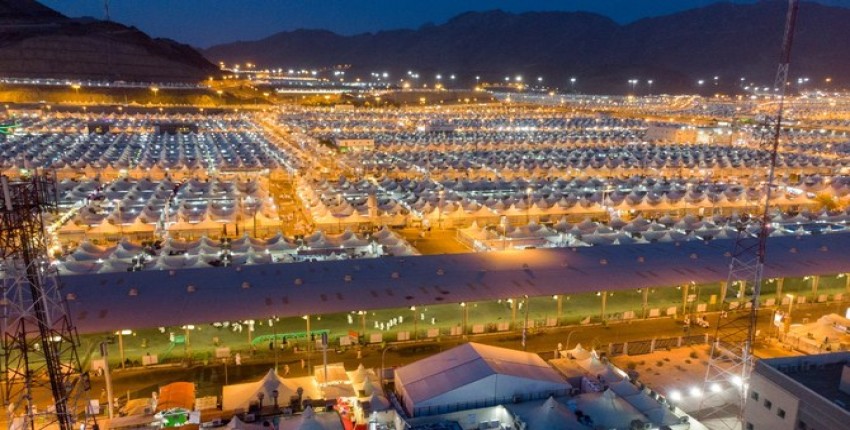Mina Mecca
Mina (Arabic: منى) is a valley six kilometres east of the Masjid al-Haram in Makkah. It’s where Hajj pilgrims sleep overnight on the 8th, 11th, 12th (and some even on the 13th) of Dhul Hijjah. The valley of Mina contains the Jamarat, the three stone pillars which are pelted by pilgrims as part of the rituals of Hajj.
Mina in the Quran
- Mina is referenced in Surah Baqarah in the Quran: “And remember Allah during [specific] numbered days. Then whoever hastens [his departure] in two days – there is no sin upon him; and whoever delays [until the third] – there is no sin upon him – for him who fears Allah . And fear Allah and know that unto Him you will be gathered.” [2:203]
Meaning of ‘Mina’
- Mina is derived from the word with the root letters ma-na-ya which means ‘to be put to the test’ or ‘to undergo‘ or ‘to find’. It is connected to word ‘manna‘ and ‘tamanna‘ which means ‘to awaken a desire’ or ‘to hope for’.
- Another reason it is called Mina is because it is connected to the test that Prophet Ebrahim (عليه السلام) had to undergo when he was ordered to slaughter his son. When his resolve was proven, he sacrificed a ram in place of his son. The name implies the ‘place where he was tested’ and the ‘place where he succeeded’.
- The word Mina can also mean ‘to flow’ because here the blood of sacrificial animals flows during the festival day of Eidul Adha. During the Farewell Pilgrimage (Hajjat-ul-Wada) the Muslims had brought with them 100 camels to be sacrificed.
Sacrifices offered by the Prophet (ﷺ)
- On the 10th Dhul Hijjah the Prophet (ﷺ) stoned the Jamarat and went back to his camp in Mina where he sacrificed 63 of the camels. Ali (رضي الله عنه) slaughtered the remaining 37 camels and the Prophet (ﷺ) instructed that a part of each camel is cooked and served to him and his Companions.
- After the camels had been sacrificed, the Prophet (ﷺ) called for a barber to shave his head. Abu Bakr (رضي الله عنه) remarked afterwards on the contrast between the Khalid bin Waleed before he embraced Islam (when he was a bitter enemy of the Muslims) and the Khalid who now said, “O Messenger of Allah, they forelock! Give it unto none but me, my father and my mother be thy ransom!” And when the Prophet (ﷺ) gave it to him he pressed it reverently against his eyes and lips. It is reported that Khalid bin Waleed (رضي الله عنه) used to keep this hair in his headgear.
The Cave of Mursalaat
- There lies a cave in Mina known as the ‘Cave of Mursalaat’ as this was where the Prophet (ﷺ) was when Surah Mursalaat was revealed to him.
Capacity of Mina
- Around 3 million pilgrims stay annually in Mina as part of the Hajj pilgrimage. The 20 km2 area accommodates them in more than 100,000 air-conditioned tents, leading to Mina also being known as the ‘Tent City’.
Points of reflection at Mina
- When we look back at the Seerah we see the First Pledge by a group of 12 Men (from Madinah) was taken in Mina. This consisted of not to associate partners with Allah, not to steal, commit adultery, kill children, bring false statements upon one another and not to be disobedient [when ordered] to do a good deed.
- This marked the turning point and revolution of Yathrib which later became the luminous city of Madinah. In this very spot if we also take similar pledges, will it not instil the love for Allah and his messengers the way the companions did.
- In this early part of Hajj the heart of the Pilgrim starts to take its turn to a more religious and spiritual journey which is to last a lifetime.




